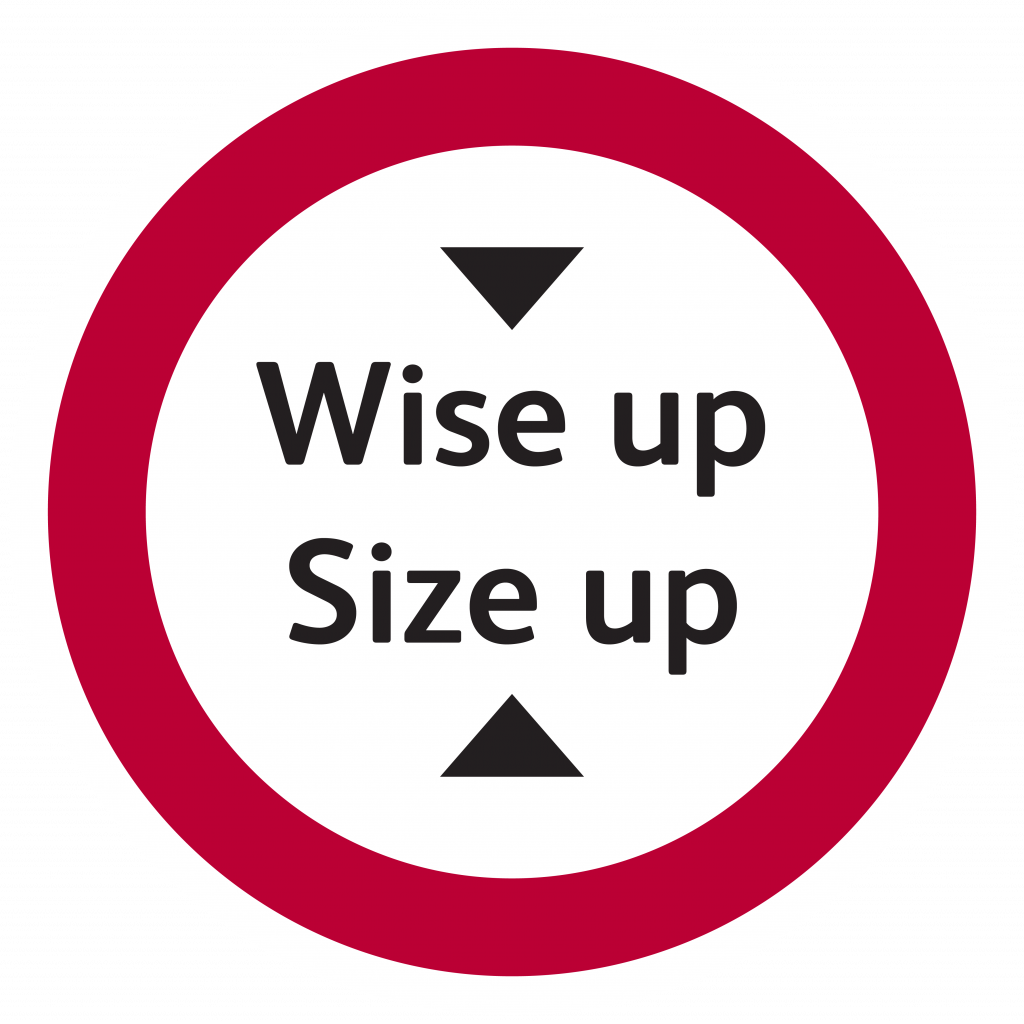Don’t try it for size – know your height before you go.
Bridge strikes are a costly problem for the railway and can cause delays to train services and on the road network while we repair any damage.
Between April 1 2021 and March 31 2022 there were 1,833 bridge strikes reported across the network.
Most of the vehicles that hit railway bridges are Heavy Goods Vehicles (HGVs) and buses, at a cost of around £13,000 per strike –costing the UK taxpayer around £23m in a year.
View good practice guides on how drivers, transport staff and bridge owners can prevent vehicles from hitting bridges and what to do if a bridge strike happens.

To combat bridge strikes, we’ve been running the national ‘Wise Up, Size Up’ campaign since 2018, predominantly targeting the peak times for strikes in March and October.
Wise up, size up animation
Our research has shown 43 per cent of lorry drivers admit to not measuring their vehicle before heading out on the road, and 52 per cent admit to not taking low bridges into account. That’s why we remind drivers to check their vehicle and plan their route to avoid low bridges before setting off, and we have tools, training and guidance in several languages for drivers and logistics companies to help tackle bridge strikes.
Throughout the year, we work alongside some of Britain’s biggest haulage firms as well as Highways England, the Driving Vehicles Standards Agency (DVSA) and other industry bodies to reduce the risk of bridge strikes.
Our haulage partners have played a vital role in helping us shape our content and evaluate the effectiveness of the campaign through surveys with their employees, providing valuable feedback directly from drivers.

Network Rail also has a network of bridge strike ‘champions’ covering each route across Britain, who raise awareness of the issue by visiting logistics companies and lead on managing the risk of bridge strikes locally.
Did you know?
Recent landmark legal cases mean Network Rail can now claim back from hauliers the huge costs incurred by bridge strikes – and we’re aiming to claim back 100 per cent. Until these legal successes, we’ve been paying for repairs and compensating train operating companies for delays to their services where we haven’t been able to claim – costing the taxpayer. A number of bridge strikes are ‘hit and run’, so while we can claim back some costs, we still have to find the rest.
We know that most drivers are complete professionals and take safety on the road very seriously. However, we know there are also some areas where we could be better across the industry to stop strikes happening and give drivers and logistics companies the tools they need to help tackle the problem more effectively. Bridge strikes impact the whole transport network and by working together we can provide the right training and education for logistics companies to help them support their drivers, ensure that those who do break the rules are penalised, and that we can lower the impact of strikes to the travelling public when they do happen. We hope the whole industry will get behind this campaign and do all they can to stop bridge strikes.
Did you know?
The number of bridge strikes peaks in October, rising to almost 10 per day. Most bridge strikes happen between 10am and 11am, but numbers remain high until around 6pm.
|
#
|
Bridge ID
|
Route
|
Location
|
Total strikes from P01 – P13 2021/22
|
|---|---|---|---|---|
|
1 |
EMP/1816 |
ANG |
Stonea Road, Stonea |
33 |
|
2 |
BML1/2/29 |
WEX |
Lower Downs Road, Wimbledon |
18 |
|
3 |
ECM1/243 |
EC |
Harlaxton Road, Grantham |
17 |
|
4 |
ETN/1601 |
ANG |
Abbey Farm, Thetford |
15 |
|
5 |
BGK/1568 |
ANG |
Stuntney Road, Ely |
12 |
|
6 |
NAJ2/16 |
CEN |
Harefield Road, West Ruislip |
12 |
|
7 |
RBS1/337 |
CEN |
Station Road B4105, Berkswell |
12 |
|
8 |
MLN1/16 23 M |
WES |
Station Road, Langley |
12 |
|
9 |
MLN1/16 23 M |
CEN |
St John’s Street, Lichfield |
11 |
|
10 |
LTN1/265 |
ANG |
Coddenham Road, Needham Market |
10 |
Find out more
Search #wiseupsizeup to follow our campaign on Facebook and Twitter.
- How we’re working with partners to prevent bridge strikes
- Contact our route-based bridge strikes ‘champions’ to find out more
- Foreign language drivers’ guides to preventing bridge strikes
- Good practice guides (Gov.uk)
- Responding to bridge strikes